The potential and prospects of the NASA / Lockheed Martin X-59 QueSST project
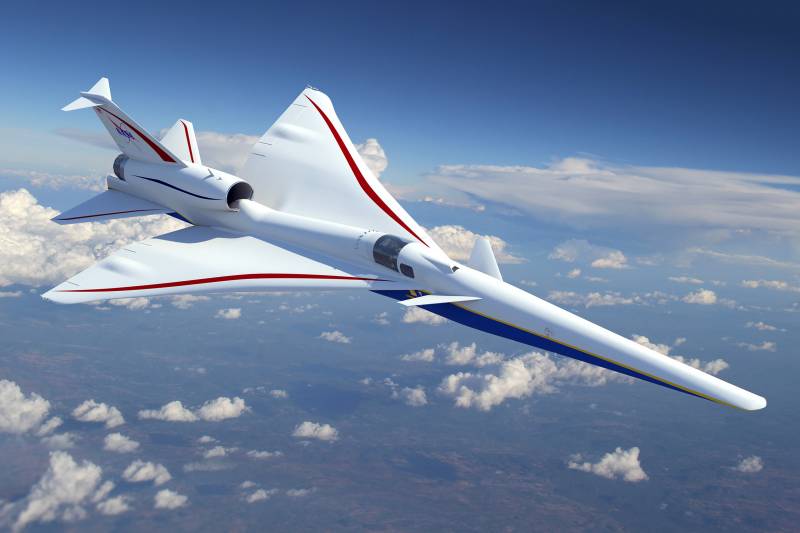
Project appearance of the aircraft X-59
NASA wants to revive supersonic passenger Aviation. To this end, in recent years, the QueSST research program has been developed, the purpose of which was to create an improved appearance of a supersonic liner, devoid of the shortcomings of its predecessors. As part of this program, Lockheed Martin recently built the X-59 experimental aircraft. In the coming months, it will enter flight tests and show the real potential of new solutions and technologies.
research project
A NASA agency program called QueSST (Quiet SuperSonic Technology - “Quiet Supersonic Technology”) started at the beginning of the last decade. As the name implies, its goal is to create the optimal appearance of a supersonic aircraft with a minimum noise level. First of all, they planned to weaken and remove the sonic boom during supersonic flight.
Until the middle of the decade, NASA conducted the necessary research and studied various aerodynamic schemes and layouts. In 2016, the agency invited Lockheed Martin to the QueSST program. She had to use the collected scientific data and develop, first, a preliminary, and then a full-fledged project of an experimental aircraft for subsequent tests.
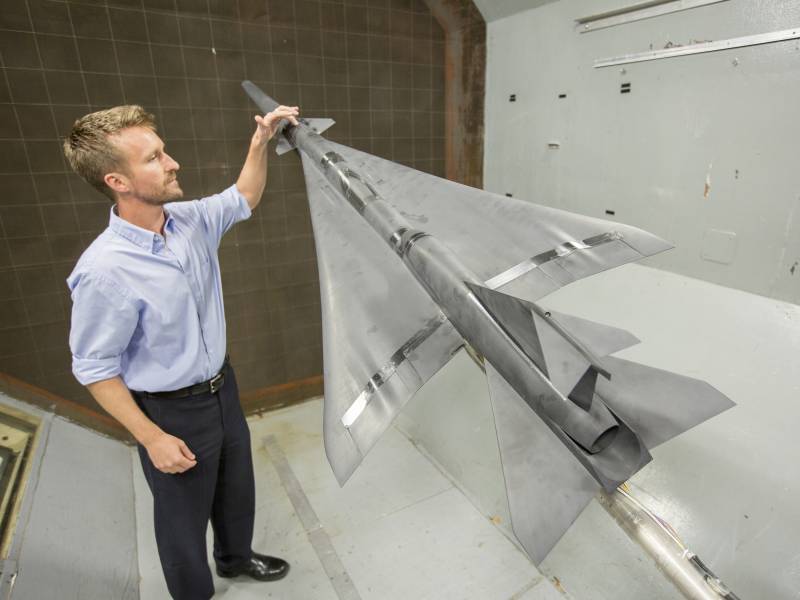
Model X-59 in a wind tunnel
The development of the project, which later received the X-59 index, was completed in 2018-19. At the same time, the construction of an experimental machine began at the Lockheed Martin plant in Palmdale (California). The manufacturing company regularly reported on the implementation of certain events - gradually the aircraft acquired its final shape and was filled with units and mechanisms.
At the beginning of June 2023, the assembly of the X-59 product was completed. The aircraft was lowered from the stocks onto its own chassis and sent to the plant's flight test station. In the near future, all onboard systems will be checked and adjusted, after which full-fledged ground tests will begin. Before the end of this year, NASA and Lockheed Martin plan to conduct the first flight. Then several years will be spent on flight tests, during which the aircraft must confirm the design characteristics.
Characteristic appearance
The experimental X-59 QueSST is a single-seat single-engine aircraft of a special design. The glider of the characteristic appearance was developed from scratch based on the collected scientific data. At the same time, some units, to simplify construction, were borrowed from existing equipment. So, the cockpit elements were taken from the T-38 training aircraft, and the chassis from the F-16 fighter.
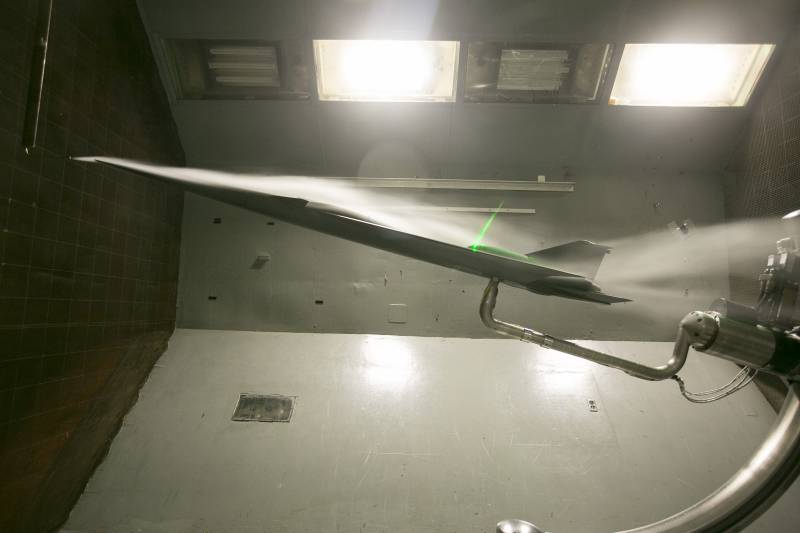
The aircraft has a total length of 29 m, a wingspan of 9 m and a parking height of 4,25 m. The maximum takeoff weight reaches 14,7 tons. It will be able to take on board up to 4,4 tons of fuel and 300 kg of payload in the form of scientific equipment.
The X-59 received a large elongation fuselage with a variable cross section. Its main feature is a long nose cone with a horizontal front edge. The fairing accounts for almost a third of the total length of the aircraft. The engine nacelle is placed in the tail above the fuselage.
The planes are arranged according to the scheme of the longitudinal triplane. There is a front horizontal plumage of small span, providing longitudinal balancing. Behind it is placed a triangular wing with a broken leading edge. In the tail there is a plumage in the form of an all-moving stabilizer and a swept keel with a small plane at the tip.
The prototype aircraft receives one General Electric F414-GE-100 turbojet engine - a modified version of the serial F414 with a different control system, pipelines, etc. The afterburner thrust of such an engine reaches 10 thousand kgf, which will allow the aircraft at an altitude of 16 km to develop a maximum speed of 1,5 M at a cruising speed of 1,42 M.
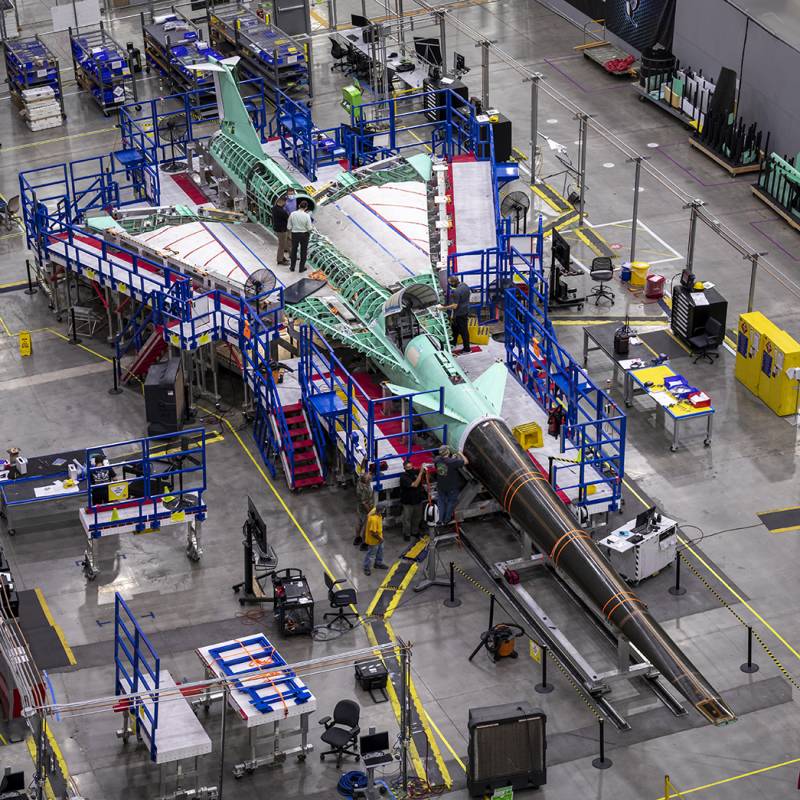
Construction of an experimental aircraft
The cockpit of the X-59 is equipped with all the necessary flight equipment. To optimize aerodynamics, the aircraft does not have a protruding canopy. The absence of a visor, giving forward and downward visibility, was compensated by the installation of eXternal Vision System (XVS) and Collins EVS3600 video systems above and below the fairing. The video signal from several cameras is combined into a common picture and displayed on a monitor in front of the pilot.
Tasks and solutions
The X-59 QueSST project faces several main tasks related to testing and testing new technical solutions. First of all, it is necessary to check whether the aircraft of a characteristic appearance is capable of flying in all design modes and reaching the specified speeds. In addition, they will study aerodynamics and determine the actual parameters of the shock wave. At all stages of testing, the original forward-looking video system will be tested.
In the previous stages of the QueSST program, NASA and Lockheed Martin conducted a large amount of research and formed the optimal aerodynamic appearance of the new aircraft. In this regard, there can be no doubt about the ability of the experienced X-59 to fly and show design characteristics. Video viewing systems that replace the traditional design of the lantern also do not encourage pessimism. It is likely that these components will live up to expectations, although refinement based on the results of testing should not be ruled out.
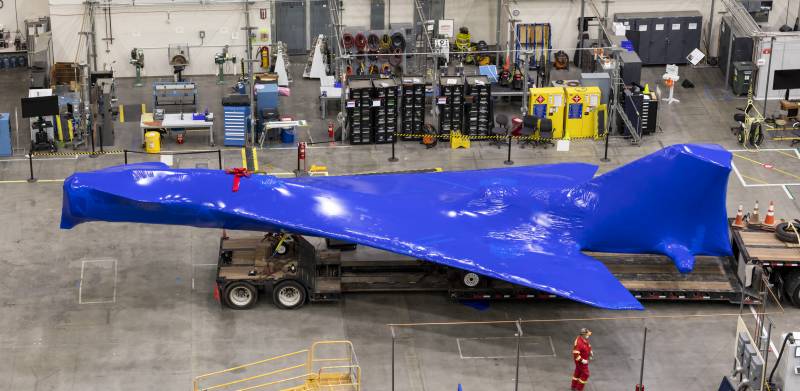
With all this, the main task of the X-59 is to demonstrate a "quiet" supersonic flight. They want to get attenuation of the sonic boom due to the special design of the airframe. So, the flat front part of the nose cone should change the shape of the resulting shock wave and reduce the volume of the generated noise. The specific shape of the tail and empennage has a similar effect on the bounce behind the aircraft.
Due to the extended fairing, the overall length of the aircraft increases and, accordingly, the distance between the shock wave in front of the nose and behind the tail. With sufficient distance, the sound waves from the two hops will not overlap and amplify each other. Finally, the contours of the main part of the fuselage and the plane are made with the expectation of eliminating additional perturbations that worsen aerodynamics.
According to calculations, optimized aerodynamics will reduce noise during flight. A typical fighter aircraft during supersonic flight produces a shock wave with a loudness (for an observer on the ground) of 100-110 dB. For X-59 during high-altitude flight, this parameter will be reduced to 70-75 dB; the sound intensity will drop by three orders of magnitude.
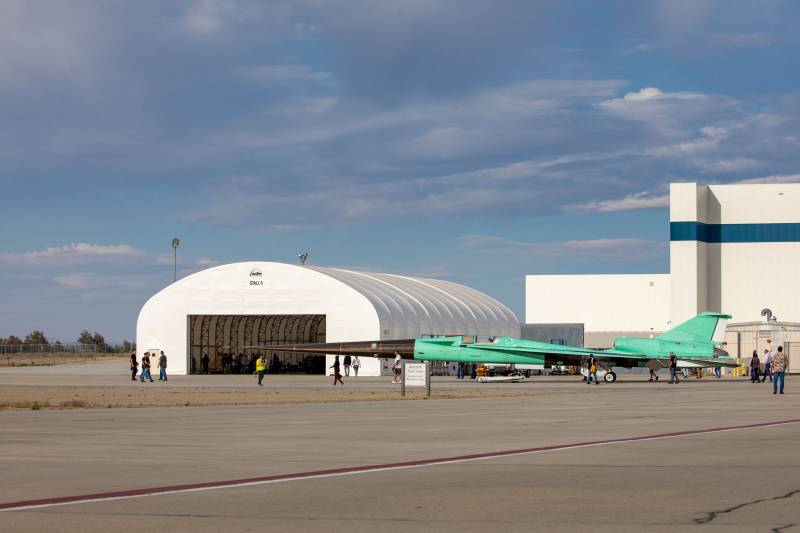
Ready X-59 is transferred from the workshop to the test station
In general, the proposed solutions look reasonable and allow you to get the desired result. In addition, the unusual appearance of the aircraft was tested in wind tunnels and confirmed its potential. In fact, now we are talking only about consolidating the scientific result - and the beginning of the development of technical issues.
Practical perspectives
The X-59 is intended for testing and experimentation only. However, in the future, NASA plans to implement the experience of the current QueSST program in promising aviation technology projects. The result of this should be the emergence of full-fledged supersonic liners for civil aviation. However, even the approximate timing of their development and hypothetical entry into the line cannot be named yet.
The developments in QueSST may indeed be of interest to the aviation industry, but their use will be associated with certain difficulties. Adapting ready-made solutions to promising projects will require some effort and additional research.
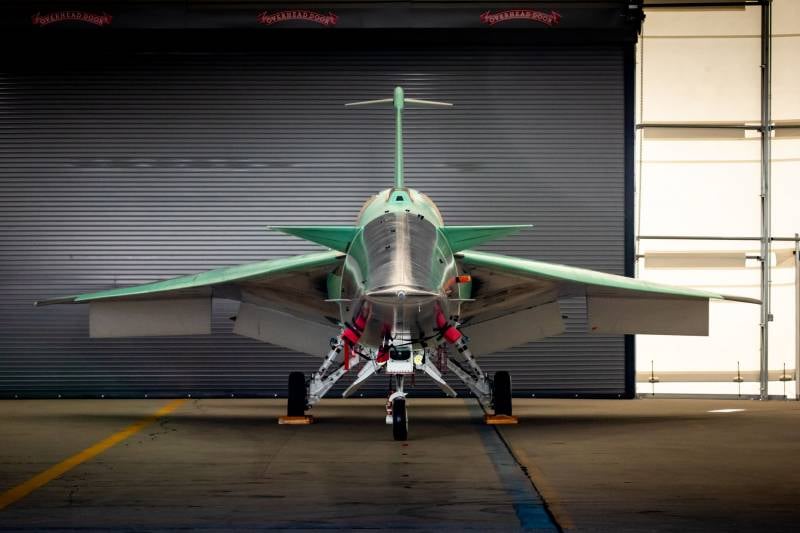
So, the main source of difficulties should be the fuselage of a characteristic design. An experimental aircraft can get by with a thin streamlined fuselage, but a full-fledged airliner needs significant internal compartments. Probably, in order to maintain the desired characteristics, the ratio of the length and section of such a fuselage should be in a certain range - and an increase in diameter will require increasing the length of the aircraft with understandable technical consequences.
Similar problems can arise when scaling a propulsion system. One engine on the X-59 is housed in a streamlined nacelle. More engines can break the original concept of aerodynamics and ruin performance.
Separately, we should dwell on the characteristic nose cone, which is a fundamentally necessary component of the new aerodynamic design. Improving flight performance, this unit increases the overall length of the aircraft and complicates its operation at airfields. In addition, the fairing cannot be used to accommodate a large number of units and blocks - in order to avoid imbalance.
So far, there are questions about the scope of developments in QueSST. It is not clear what classes of aircraft can be built according to this scheme. Perhaps the accumulated experience can only be used to create aircraft of limited size - "business jets", etc. However, scaling up the technology and the emergence of larger models with a cabin for a large number of passengers cannot be ruled out. Apparently, such prospects for QueSST will become clear only after the planned tests are carried out.
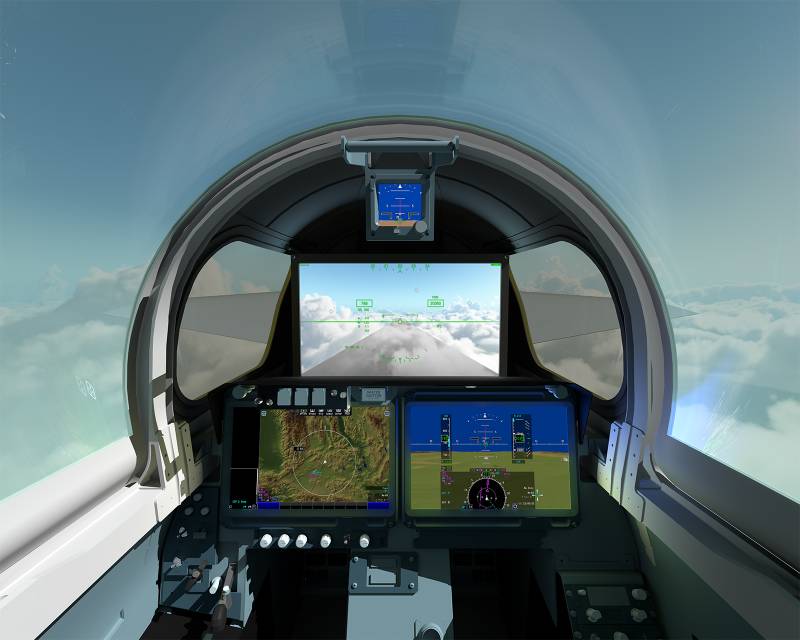
Cabin interior. Upper monitor replaces the canopy
It can be assumed that developments in QueSST as a whole will not find application in military aviation. For combat aircraft, the shock wave is not a noticeable problem. She does not unmask the car and does not bear any other risks. However, the ideas of optimizing aerodynamics and original optoelectronic systems will be useful.
New attempt
The operation of civilian supersonic liners on regular lines ceased two decades ago. With all their advantages, the Soviet Tu-144 and the Anglo-French Concorde could not compete with subsonic liners - they turned out to be more economical, quiet and comfortable. Nevertheless, scientific and aircraft building organizations continue to deal with the subject of civil supersonic, implementing research programs and offering various projects.
The current QueSST program from NASA and Lockheed Martin is, at its core, another attempt to revive civilian supersonic aviation. However, it differs from a number of other similar projects. American experts have set the main goal of getting rid of one of the main shortcomings of a supersonic aircraft in the form of a shock wave.
NASA developed an original way to solve this problem, and then, with the help of Lockheed Martin, they entered it into a real project. New ideas have already been tested in the laboratory, and flight tests of the experimental aircraft will soon begin. Whether the X-59 will be able to justify the hopes placed on it and influence the development of civil aviation will become clear in the distant future.
Information